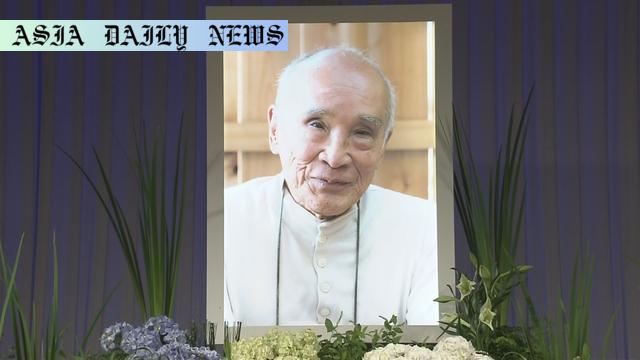Tanikawa Shuntaro – Renowned Japanese poet whose works on life and death, like ‘Two Billion Light-Years of Solitude,’ continue to inspire.
Key Point 1: Tanikawa Shuntaro was honored at a farewell event in Tokyo with 560 attendees celebrating his life and poetic works.
Key Point 2: His renowned poems include ‘Two Billion Light-Years of Solitude’ and ‘To Live,’ which reflect his profound observations on life.
Key Point 3: Tanikawa also translated works like ‘Swimmy,’ ‘Mother Goose rhymes,’ and ‘Peanuts’ into Japanese, impacting cultural exchange.
Key Point 4: Yoshimasu Gozo and Agawa Sawako shared emotional memories, illustrating Tanikawa’s genius and his timeless literary legacy.
Key Point 5: Readings of his works and exhibition of his belongings left attendees inspired by his contributions to literature.

Honoring the Life of Tanikawa Shuntaro
Tanikawa Shuntaro, one of Japan’s most acclaimed poets, was remembered in a heartfelt farewell event held in Tokyo recently. Tanikawa, who passed away in November at the venerable age of 92, left an indelible mark on the literary world through his poetry, translations, and unique worldview. Over 560 admirers, colleagues, and friends gathered to pay tribute to the poet who inspired generations with his writings.The ceremony reflected Tanikawa’s immense cultural significance. Among the works spotlighted were masterpieces such as ‘Two Billion Light-Years of Solitude’ and ‘To Live,’ which beautifully encapsulated his insights on life, death, and human connection. His poetry, known for its remarkable observational depth, has been celebrated internationally, reinforcing universal themes like solitude and existential musings.
Bridging Cultures through Translation
Another remarkable aspect of Tanikawa’s career was his work in translations. He extended the reach of Japanese readers to global literature. His translations of Leo Lionni’s children’s classic ‘Swimmy,’ ‘Mother Goose rhymes,’ and the iconic comic series ‘Peanuts’ embody his remarkable ability to bridge cultural divides.His translations not only maintained the original essence and emotions but also added a unique yet relatable Japanese touch. These works ensured that younger generations had access to creative narratives blending education and joy. Today, these compelling translations stand as living markers of Tanikawa’s multilingual genius and his dedication in fostering literary exchange.


